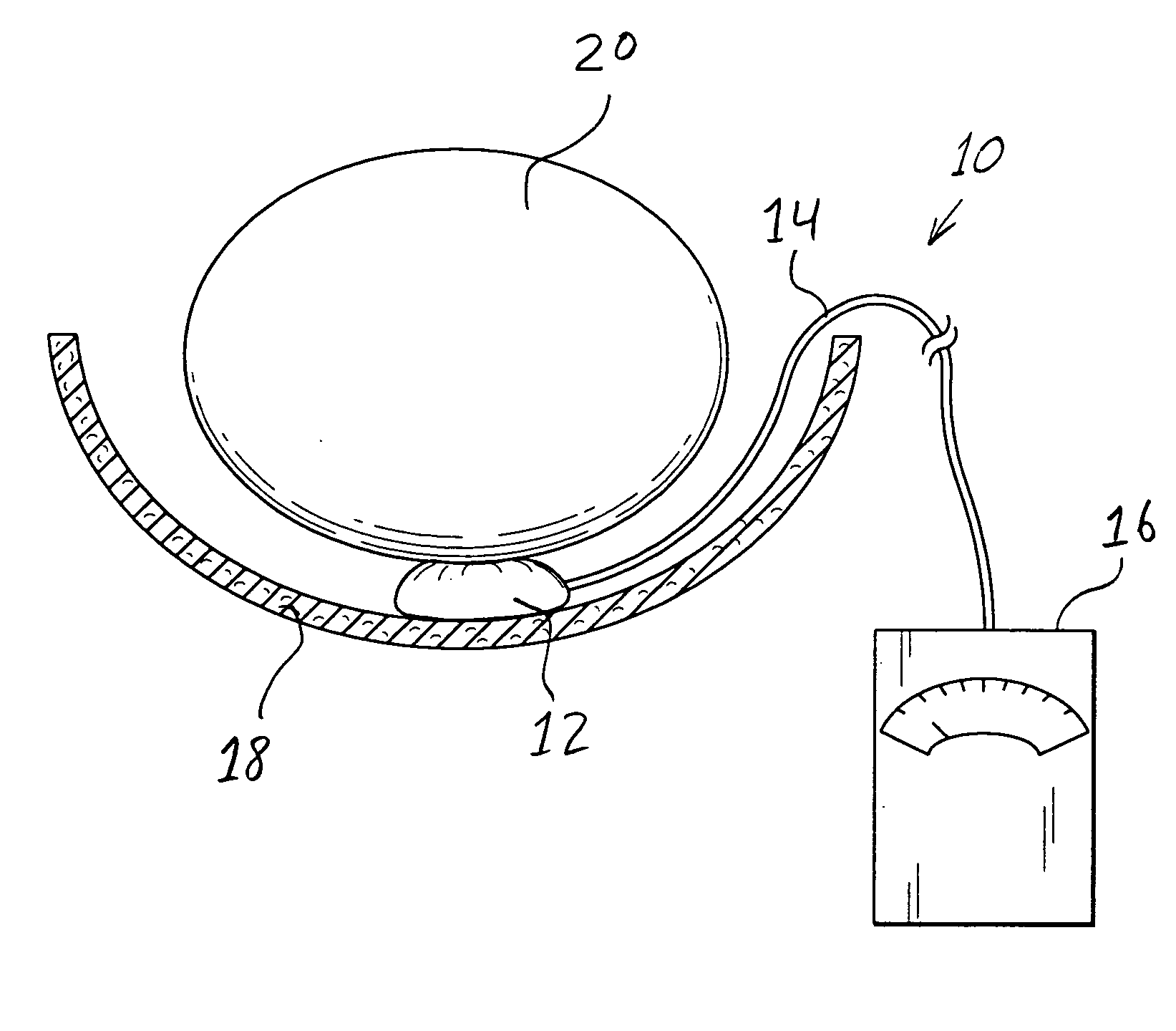Systems and methods for determining pressure and spacing relating to anatomical structures
a technology of anatomical structure and system, applied in the field of systems and methods for determining pressure and spacing relating to anatomical structure, can solve the problems of inexperienced surgeons producing substantially less favorable outcomes, difficult aspects, and lacking in the art, and achieve the effect of reducing volum
- Summary
- Abstract
- Description
- Claims
- Application Information
AI Technical Summary
Benefits of technology
Problems solved by technology
Method used
Image
Examples
Embodiment Construction
[0024] The detailed description as set forth below in connection with the appended drawings is intended as a description of the presently preferred embodiments of the invention, and is not intended to represent the only form in which the present invention may be constructed or utilized. The description sets forth the functions and sequences of steps for constructing and operating the invention in connection with the illustrated embodiments. It is understood, however, that the same or equivalent functions and sequences may be accomplished by different embodiments and that they are also intended to be encompassed within the scope of this invention.
[0025] According to the first embodiment shown in FIG. 1, the surgical monitoring device 10 comprises a pressure or contact sensor 12 interposable between anatomical masses and / or anatomical structures 18, 20. The sensor 12 is operatively coupled via link or connection 14 to a monitor 16, the latter being operative to provide an indication ...
PUM
 Login to View More
Login to View More Abstract
Description
Claims
Application Information
 Login to View More
Login to View More - R&D
- Intellectual Property
- Life Sciences
- Materials
- Tech Scout
- Unparalleled Data Quality
- Higher Quality Content
- 60% Fewer Hallucinations
Browse by: Latest US Patents, China's latest patents, Technical Efficacy Thesaurus, Application Domain, Technology Topic, Popular Technical Reports.
© 2025 PatSnap. All rights reserved.Legal|Privacy policy|Modern Slavery Act Transparency Statement|Sitemap|About US| Contact US: help@patsnap.com



